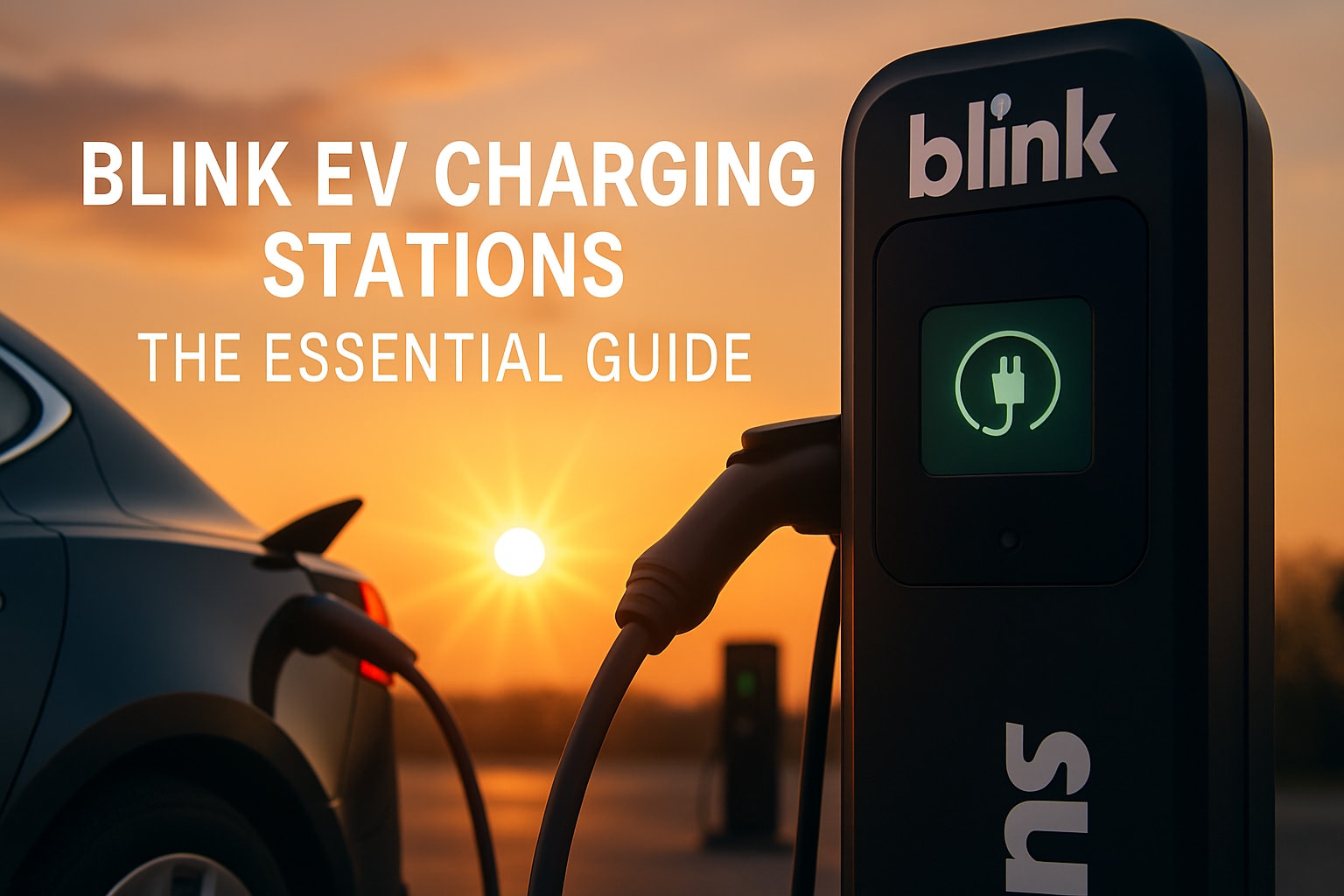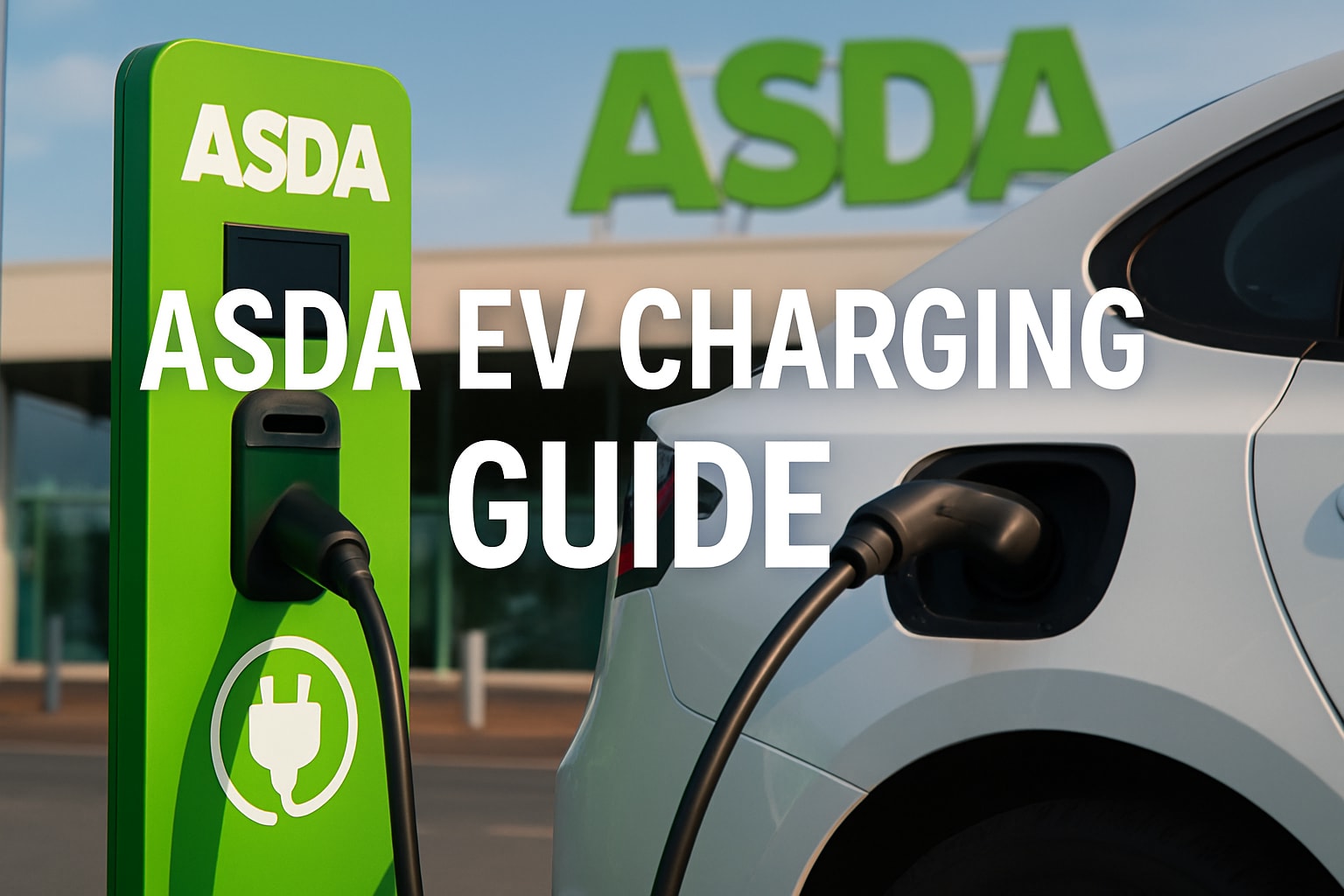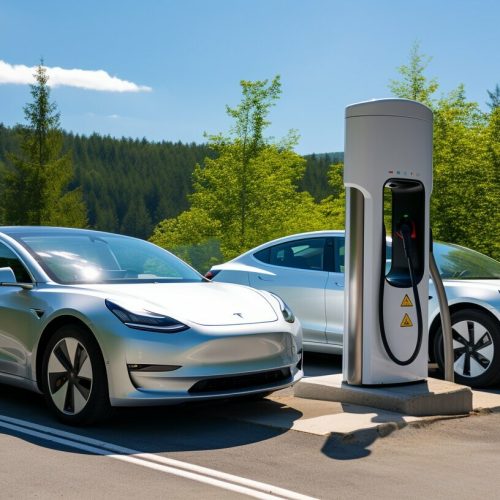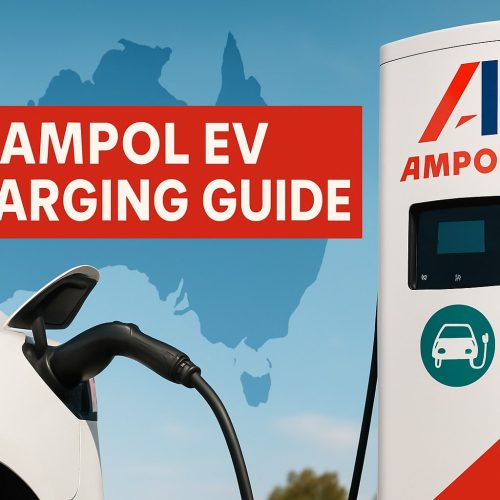Electric vehicle adoption is skyrocketing, making reliable charging more critical than ever in 2025. As drivers seek convenient solutions, blink ev charging stations stand out as a trusted choice.
This guide is your essential resource for understanding, using, and maximizing blink ev charging stations. You will discover details about the blink network, advanced charging features, step-by-step instructions, pricing, and future innovations.
Learn how to navigate new charging technology, streamline your charging routine, and make the most of every session. Whether you are new to EVs or a seasoned driver, practical tips and expert insights will help you charge with confidence.
Understanding Blink EV Charging Stations: Network, Technology, and Reach
The landscape of EV charging is evolving rapidly, and blink ev charging stations are at the forefront of this transformation. In 2025, drivers demand a network that is widespread, technologically advanced, and easy to use. Let us explore the reach and innovation that set Blink apart in the growing EV charging market.

Blink’s Global and UK Network Coverage
Blink’s network has seen remarkable growth, serving drivers in over 25 countries and surpassing 100,000 public charging points globally by 2025. In the UK, blink ev charging stations have become a familiar sight in major cities such as London, Manchester, and Birmingham, as well as in smaller towns and rural hubs.
You will find blink ev charging stations in a wide array of locations:
- Public car parks and high streets
- Retail and supermarket parking lots
- Commercial workplaces and business centers
- Residential communities and multifamily dwellings
- Dedicated fleet depots
Expansion in the UK has accelerated through partnerships with local councils and retailers, bringing new stations to both urban and underserved rural areas. For example, recent installations in large supermarket chains and city center car parks have made charging more accessible to all.
Here’s how Blink stacks up against other leading networks:
| Network | UK Charging Points | Urban Presence | Rural Coverage | App Integration | Membership Req. |
|---|---|---|---|---|---|
| Blink | 5,000+ | High | Growing | Yes | Optional |
| bp pulse | 8,000+ | High | Moderate | Yes | Optional |
| Instavolt | 3,500+ | Moderate | Low | Yes | No |
Blink’s open network supports both members and pay-as-you-go users, making it easy to access blink ev charging stations via app or contactless payment. In 2025, Blink holds a 12% share of the UK public charging market, with a 30% annual growth rate since 2023.
Technology Behind Blink Charging Stations
A key reason drivers choose blink ev charging stations is their robust technology. Blink offers a mix of Level 2 AC chargers, DC fast chargers, and new ultra-rapid options for time-sensitive charging. Hardware is designed for UK standards, supporting Type 2, CCS, and CHAdeMO connectors for maximum compatibility.
Smart features enhance every session:
- Touchscreen menus with multi-language support
- Contactless payment and RFID card acceptance
- Real-time station status and remote monitoring via app
- Integration with local renewable energy sources
Blink’s network follows strict safety protocols, with advanced surge protection, secure data handling, and 24/7 monitoring to protect users and vehicles.
A standout feature is interoperability, achieved through the Open Charge Point Protocol (OCPP). This standard allows blink ev charging stations to work seamlessly with multiple back-end systems and third-party apps. For those interested in how OCPP supports network flexibility, see Discover OCPP – The Open Charge Point Protocol.
Blink’s commitment to technology also extends to grid management, helping balance energy demand and integrate renewables. As a result, blink ev charging stations deliver speed, security, and reliability for every user.
Key Features and Benefits of Blink EV Charging Stations
Meeting the demands of modern EV drivers, blink ev charging stations deliver a blend of cutting-edge technology, user-focused design, and sustainability. Whether you’re new to EVs or an experienced driver, understanding these stations’ core advantages is essential to making the most of your charging experience.
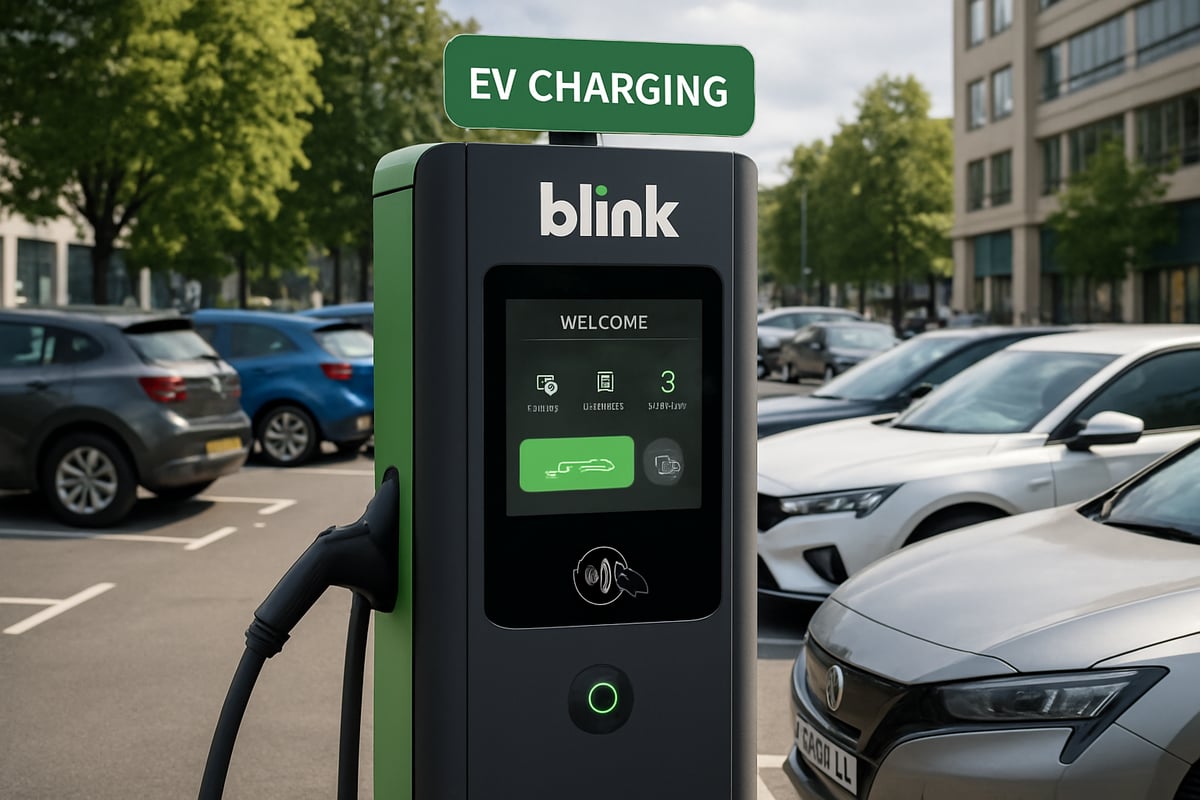
User Experience and Accessibility
Blink ev charging stations are designed for ease of use. The intuitive touchscreen menus support multiple languages, making navigation straightforward for everyone. Enhanced accessibility features ensure that disabled users can operate the stations comfortably, both at the charging point and through the Blink mobile app.
Customer support is available 24/7, providing rapid assistance in emergencies or for troubleshooting. In 2024, a major interface update led to a notable increase in user satisfaction, with feedback highlighting the improved clarity and speed of the charging process. Furthermore, smart features like contactless payment, real-time status updates, and remote monitoring are powered by Blink’s proprietary cloud-based software, as detailed in the Advanced Features of Blink Charging Stations.
These advancements make blink ev charging stations accessible and reliable for a diverse user base.
Charging Performance and Reliability
Performance is a top priority for blink ev charging stations. Stations offer various charging speeds, including Level 2 AC and DC fast charging, with kW ratings suitable for both short top-ups and full charges. On average, session durations are competitive, allowing drivers to quickly resume their journey.
Maintenance practices ensure high uptime, with real-time monitoring to detect and address faults promptly. In 2024, Blink reported lower average downtime compared to several UK competitors, cementing its reputation for reliability. The Blink app and website provide instant updates on charger availability and status, giving users confidence when planning their charging stops.
With blink ev charging stations, you can expect consistent performance and minimal disruption during your travels.
Cost, Payment, and Membership Options
Flexibility in payment is a hallmark of blink ev charging stations. Users can choose between pay-as-you-go sessions or membership-based models, depending on their charging habits. Accepted payment methods include RFID cards, contactless bank cards, and mobile wallets, catering to a wide range of preferences.
Pricing transparency is central to the Blink ethos. Session fees, idle fees, and membership perks are clearly displayed, making it easy to compare costs. For a quick overview, see the table below:
| Feature | Blink | UK Competitor A | UK Competitor B |
|---|---|---|---|
| Pay-as-you-go | Yes | Yes | Yes |
| Subscription Option | Yes | Yes | No |
| Contactless Payment | Yes | Yes | Yes |
| Price Transparency | High | Medium | Medium |
This clarity helps users of blink ev charging stations make informed decisions, ensuring they get the best value for their money.
Environmental and Sustainability Initiatives
Sustainability is at the heart of blink ev charging stations. Many sites integrate solar panels or source electricity from renewable providers, reducing the carbon footprint of every charging session. Blink also partners with local councils to enhance green energy supply, supporting community-wide sustainability goals.
Materials used in station construction are chosen for durability and minimal environmental impact. Carbon offset programs further contribute to Blink’s commitment to eco-friendly transport. These initiatives are part of a broader effort to create a cleaner future for all EV drivers.
By choosing blink ev charging stations, you support a company dedicated to environmental stewardship and innovation.
How to Use a Blink EV Charging Station: Step-by-Step Guide
Charging your electric vehicle at blink ev charging stations is straightforward when you know the right steps. This guide walks you through the entire process, from finding a charger to troubleshooting common issues. Each step is designed to ensure a smooth, safe, and efficient experience at blink ev charging stations.
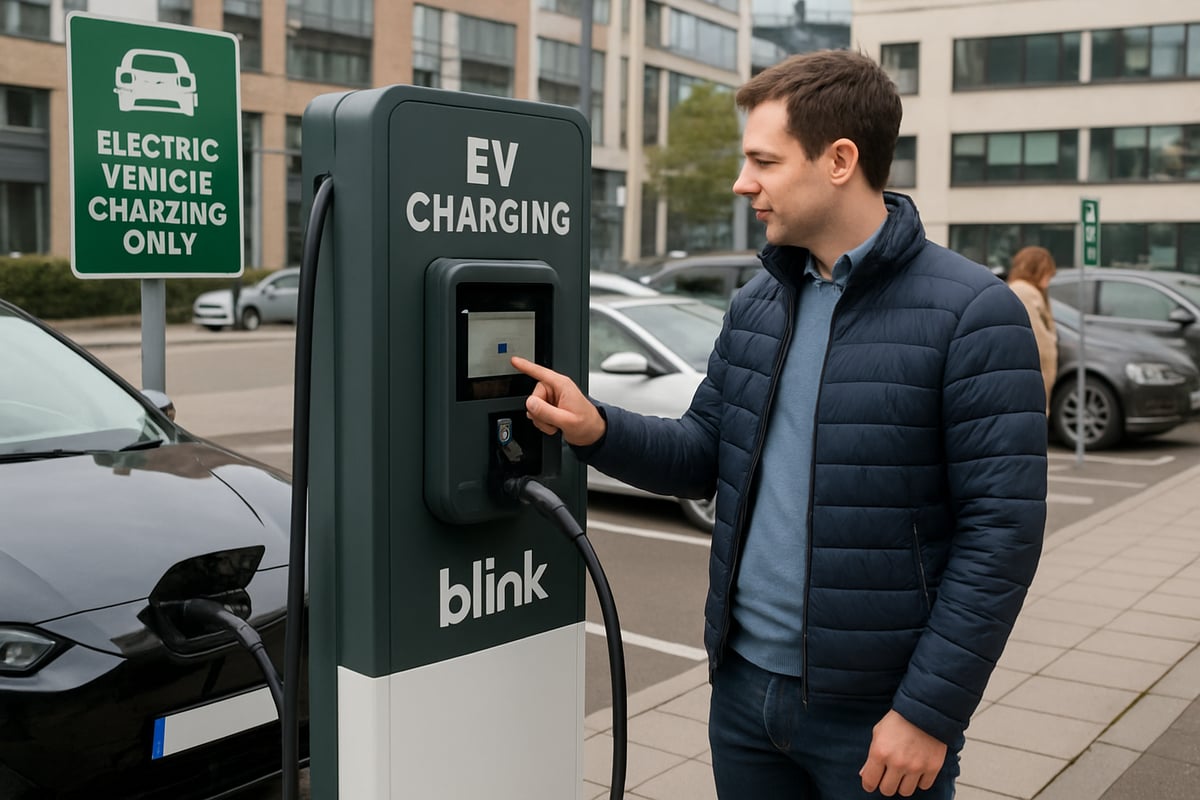
Step 1: Locate a Blink Charging Station
Begin by finding your nearest blink ev charging stations using the Blink app, official website, or trusted third-party EV charging maps. The Blink app offers real-time station availability, allowing you to filter by connector type, charging speed, and location amenities.
You can also reserve a charging spot in advance at select locations. This feature is particularly useful during peak hours or in densely populated areas. The app interface is user-friendly, providing step-by-step directions to your chosen station.
For first-time users, a quick walkthrough in the app highlights all features. Always double-check that the station you select supports your vehicle's charging needs.
Step 2: Prepare for Charging
Before arriving at blink ev charging stations, confirm your vehicle’s connector compatibility. Most Blink stations in the UK support Type 2, CCS, and CHAdeMO connectors, but verifying in advance saves time.
Ensure your Blink account is set up for seamless payment and station access. Guest access is also available if you do not have a membership. Bring your RFID card if you prefer tap-to-charge or ensure your mobile payment method is ready.
Checklist:
- RFID or payment card
- Charging cable, if required
- Blink app or access credentials
Taking these steps ensures a smooth start at blink ev charging stations.
Step 3: Initiate the Charging Session
Once parked, connect your EV to the charger using the appropriate cable. Make sure the connection is secure and the cable is undamaged before proceeding at blink ev charging stations.
To start your session, use the Blink app, tap your RFID card, or use contactless payment at the station interface. LED indicators and on-screen prompts confirm that charging has begun. The app provides an immediate notification and displays session details.
If you encounter any issues, check the app for troubleshooting tips or use the help button on the station itself for guidance.
Step 4: Monitor Charging
While charging at blink ev charging stations, keep track of your session’s progress through the app. The interface shows real-time data, including kWh delivered, estimated time remaining, and charging speed.
You can monitor your session remotely, making adjustments as needed for optimal battery health. The Blink app allows you to pause or stop charging if your plans change.
For best results, avoid charging to 100% unless necessary. Many EV manufacturers recommend charging between 20% and 80% to prolong battery life.
Step 5: End and Pay for Your Session
To finish charging at blink ev charging stations, use the app, tap your RFID card, or follow the on-screen prompts at the station. Wait for the confirmation that your session has ended before unplugging the charging cable.
After disconnecting, a session summary appears in the app and on the station display. Payment is processed automatically via your chosen method, and you will receive a receipt by email or in-app notification.
Always check your vehicle and the station area before leaving to ensure nothing is left behind.
Step 6: Troubleshooting and Support
If you experience issues at blink ev charging stations, such as card errors or connection failures, follow the troubleshooting tips in the app or on the station screen. Most problems can be resolved by restarting the session or checking cable connections.
For more complex issues, Blink provides 24/7 customer support via phone, in-app chat, and on-site emergency assistance. Average response times are under five minutes for urgent requests.
For additional safety guidance and best practices, refer to the Ensuring Safety at Charging Stations resource, which covers everything from safe cable handling to emergency procedures.
Pricing, Membership, and Cost-Saving Tips for Blink Charging in 2025
Understanding the cost of charging is essential for every EV owner. As blink ev charging stations expand across the UK, knowing how to optimize your charging expenses can make a significant difference in your overall electric vehicle experience.
Blink Pricing Models Explained
Blink ev charging stations offer flexible pricing to suit different user needs. The core structure features session fees, per kWh rates, and idle charges to encourage turnover at high-demand locations. In 2025, UK users typically see session fees ranging from £0.50 to £1.00, with per kWh rates between £0.39 and £0.59. Idle charges are applied if a vehicle remains plugged in after charging completes.
Here is a quick comparison table:
| Fee Type | Typical UK Rate | Notes |
|---|---|---|
| Session Fee | £0.50 – £1.00 | Charged per charging session |
| Per kWh Rate | £0.39 – £0.59 | Varies by region |
| Idle Charge | £0.10 – £0.15/min | Applies after full charge |
Regional pricing may differ, especially in city centers or rural areas. For a deeper look at how these costs stack up against other networks, see Understanding EV Charging Costs in the UK. Comparing home charging to public charging at blink ev charging stations can help users plan the most cost-effective routines.
Membership Benefits and Loyalty Programs
Frequent users of blink ev charging stations can take advantage of membership tiers designed for savings and convenience. Memberships often provide discounted per kWh rates, priority access at busy sites, and exclusive offers. In 2025, loyalty programs include earning points for every kWh charged, which can be redeemed for free charging sessions or partner rewards.
Referral bonuses are another perk. When a member refers a friend, both parties may receive charging credits. These programs are especially appealing for fleet operators or commuters who rely on blink ev charging stations regularly.
A recent case study showed that a daily commuter saved over £200 annually after enrolling in Blink’s premium membership, thanks to lower rates and frequent-use incentives. This demonstrates the tangible value of choosing the right membership for your driving habits.
Cost-Saving Strategies for Users
To make the most of blink ev charging stations, consider these cost-saving tips:
- Charge during off-peak hours when rates are lower.
- Bundle public charging with home solutions for overall savings.
- Take advantage of seasonal promotions or employer discounts.
- Use the Blink app to locate stations with the best rates and avoid idle fees.
For example, a London-based EV owner who combined off-peak charging with a Blink membership and workplace partnership saved nearly £300 in 2024 compared to pay-as-you-go rates alone.
By staying informed and proactive, users can maximize the value of blink ev charging stations while keeping costs under control.
Innovations and Future Trends for Blink EV Charging Stations
The future of blink ev charging stations is rapidly unfolding, with 2025 shaping up as a landmark year for both technology and user experience. As electric vehicle adoption accelerates, the need for smarter, faster, and more accessible charging solutions has never been greater. Let us explore the key innovations, partnerships, and sustainability trends that will define blink ev charging stations in the coming year.
Technological Advancements in 2025
Blink ev charging stations are pushing the boundaries of charging technology in 2025. Users will notice faster hardware, with new Level 3 DC ultra-fast chargers capable of delivering significant energy in minutes. Wireless charging pilots are underway, aiming to make plug-free sessions a reality for select models.
Blink is also investing in advanced software. Their app now features AI-powered route planning, real-time charger availability, and predictive analytics to help drivers avoid wait times. These upgrades are designed to make blink ev charging stations more convenient and intuitive for every driver.
Notably, Blink's Technological Innovations have been showcased at international events, highlighting seven next-generation charging products and supporting the global trend toward electrification. Ongoing pilot projects, such as ultra-fast charging corridors connecting major cities, are setting new standards for performance and reliability.
Expansion and Partnerships
Strategic growth is at the core of blink ev charging stations in 2025. Blink is forming new partnerships with leading retailers, municipal councils, and fleet operators. These collaborations are expanding the network into both urban and rural areas, ensuring more drivers have access to reliable charging.
Recent deals include the installation of blink ev charging stations at a major UK supermarket chain, increasing station density in high-traffic retail environments. Integration with smart city infrastructure is another focus, supporting energy grid management and seamless payment experiences across multiple public services.
A summary of recent expansion efforts:
| Partnership Type | Example Initiative |
|---|---|
| Retail Collaboration | Supermarket station rollout |
| Municipal Projects | City center charging hubs |
| Fleet Integration | Dedicated fleet charging depots |
These efforts make blink ev charging stations a central part of the UK's evolving EV ecosystem.
Sustainability and Green Initiatives
Sustainability remains a top priority for blink ev charging stations. In 2025, more stations are powered by renewables, including solar and wind, reducing carbon emissions for every charge. Battery recycling programs are being expanded, supporting a circular economy and minimizing waste.
Blink has published its latest sustainability report, highlighting progress in green energy integration and partnerships with local councils. For more details on these efforts, see Blink's Sustainability Initiatives, which discuss strategies to reduce range anxiety and promote cleaner transportation.
Additional green initiatives include:
- Use of sustainable materials in station construction.
- Carbon offset programs for charging sessions.
- Community projects to support local environmental goals.
These actions demonstrate the commitment of blink ev charging stations to a cleaner future.
User-Centric Innovations
User experience continues to drive innovation at blink ev charging stations. Accessibility improvements, such as tactile interfaces and enhanced app features for disabled users, are being rolled out across the network. Personalized charging recommendations, loyalty rewards, and instant feedback options are now integrated into the Blink app.
User feedback has been instrumental in shaping new features, from dynamic pricing alerts to tailored station suggestions based on driving habits. The goal is to make blink ev charging stations as intuitive and responsive as possible for drivers of all backgrounds.
In 2025, expect further enhancements designed to ensure every interaction with blink ev charging stations is seamless, efficient, and rewarding.
Expert Tips for Maximizing Your Blink Charging Experience
Maximizing your experience with blink ev charging stations requires strategic planning, smart charging habits, and staying informed about the latest advancements. Here are expert tips to help you get the most from every charge.
Planning and Optimizing Charging Sessions
Efficient use of blink ev charging stations begins with careful planning. Use the Blink app or trusted third-party apps to map your route and identify charging points along the way. Avoid peak hours, such as weekday evenings or holiday weekends, to minimize wait times and ensure availability.
Consider this sample itinerary for a UK road trip:
| Stop | Location | Charging Window | Station Type |
|---|---|---|---|
| 1 | Manchester City | 7–8 am | Level 2 |
| 2 | Birmingham Retail | 12–1 pm | DC Fast |
| 3 | London Suburbs | 6–7 pm | Level 2 |
Check station status before departure, and always have a backup location in mind. For a wider view of available networks and comparisons, explore Top EV Charging Solutions for UK Drivers.
Battery Health and Charging Best Practices
Protecting your EV’s battery is crucial when using blink ev charging stations. Follow manufacturer guidelines regarding state-of-charge limits—typically keeping the battery between 20% and 80% for daily driving.
Best practices include:
- Using DC fast charging sparingly for regular use
- Avoiding charging to 100% unless necessary for long journeys
- Disconnecting promptly when charging completes
- Monitoring battery temperature, especially in extreme weather
By adopting these habits, you optimize battery lifespan while enjoying the reliable performance of blink ev charging stations.
Staying Informed and Connected
Stay ahead with the latest updates on blink ev charging stations. Subscribe to maintenance alerts and notifications through the Blink app, ensuring you are aware of any planned service or outages.
Engage with the Blink user community to exchange tips, share experiences, and access support when needed. Take advantage of educational resources, such as webinars and in-app guides, to deepen your understanding of charging technology and best practices.
Participating in these networks helps you maximize the advantages of blink ev charging stations and contributes to a more informed EV community.
Your Guide to EV Charging News and Insights
For comprehensive news and expert analysis on blink ev charging stations, turn to Your Guide to EV Charging News and Insights. This platform is the UK’s leading source for up-to-date information on charging solutions, including in-depth coverage of Blink’s 2025 innovations and network expansion.

By following EV Charger News, you gain access to expert guides, real-world case studies, and technical insights. Stay informed about new features, pricing updates, and industry trends to make the most of your blink ev charging stations experience.

